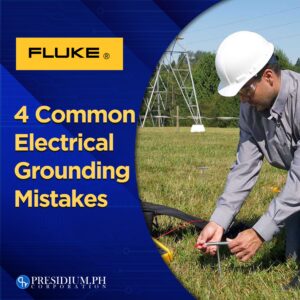How to Choose the Best Insulation Resistance Tester
No idea what kind of insulation resistance tester to use? Not sure which model is working with the best efficiency? We have conked-out our answers to your queries when it comes to deciding which is the best insulation resistance tester to use.
Make A List of Equipment for Testing
First things first, make a list of all the equipment you will need with their nominal voltage rating (seen on the equipment’s nameplate) for an insulation resistance testing. It is necessary to identify the nominal voltage rating so you could determine what test voltage is needed from the tester. Also, you will also need to indicate the number of insulation resistance tests you plan to perform in a year. As you go along the process, you will surely be surprised of how features of the tester work, the quality, and durability it brings as how it is designed to be, especially how relevant it is for everyone.
Identify Voltage Requirements
It is important to know that the output test voltage applied to equipment has to be based on the manufacturer’s recommended DC insulation resistance test voltage. However, if the test voltage is not indicated, you may refer to the International Electrical Testing Association’s table of recommendations. It is important to note down the most suitable insulation resistance tester that can supply the output test voltage needed. Also, not all insulation resistance testers are the same – some testers can only support somewhere between 5000 V dc – 10,000 V dc. Please refer to the table of recommended test voltages and minimum insulation values below.

Know Where Will the Testing Take Place
Knowing the testing environment and the other uses of your insulation resistance tester can greatly benefit you in choosing other additional features. A digital multimeter and the ability to use one instrument for both insulation resistance tests can also add convenience to the process.
Some insulation resistance testers can be very large and not portable, so there is a need for circuits and equipment to be verified as electrically de-energized first before an insulation resistance tester is connected to the equipment so it wouldn’t be a hassle for you to carry the insulation resistance tester to various locations.
What You Learn from an Insulation Resistance Test
Insulation Resistance Testing puts a qualitative value on both conductor insulation and internal insulation. It is done by applying a dc voltage to the conductor equipment under test.
There are a couple of things to remember as you go along the test and it’s essential to always be guided by these. First, as the charging current begins to build, it is normal to see a low value on the meter face. With more current flowing out of the test, the lower the megaohm reading. A higher megaohm is directly associated with good insulation quality.
Absorption or polarization is the next current flowing towards the equipment. The amount of absorption is dependent on the contamination of the insulation. When there’s moisture in the insulation, the absorption value will be high and the resistance is low.
Experience Level
The ability of the test instrument will be as good as the person’s experience level on reading it. You must consider your expertise in selecting the insulation resistance tester that you must use. Though, insulation resistance testing training needs not to be extensive.
Also, make sure the insulation resistance tester that you will purchase must support the output test voltage and other functions.
If you having trouble choosing the correct resistance insulation tester, you must choose the ones that provide troubleshooting efficiency and complete maintenance records over time.
Learn more about the various products of Fluke Industrial Group and Fluke Calibration, check them out at Presidium.PH!



